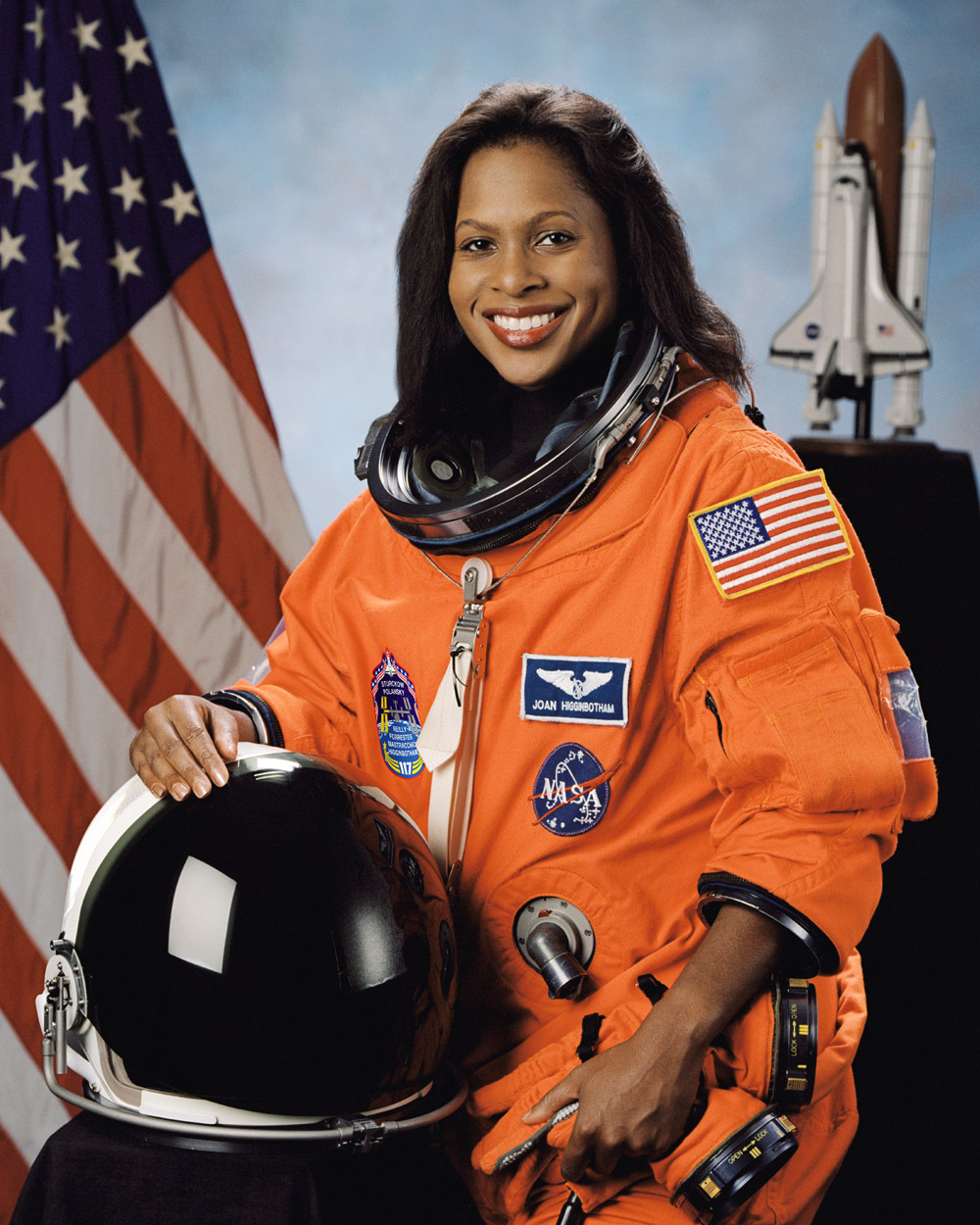April 14, 2017

Curiosity leads engineering alumna to the stars
Kids today will never know the struggle.
There once was a time when there was one phone in the house, either on a wall or sitting on a stand somewhere, and parents found it much easier to control when and how it was used.
But if you were a budding engineer with a drive to understand “how things worked,” there was always a work-around method to solve this problem. For Joan Higginbotham, overcoming the restricted access to the family phone was just the first of many challenges that would eventually lead her to a seat on a space shuttle.
“I grew up in a house built in the 1950s and there was an old four-prong outlet where you’d plug in the old rotary type phones. Back in the day, Ma Bell would charge you for each phone call, and with four kids in the house, our phone bills were outrageous. So my dad took the phone out of the den to prevent us from sneaking back there and using it,” Higginbotham said. “However, being the crafty engineer-to-be, I discovered that I could take the wires from the cord in the phone my grandmother had given us and connect them to the wires on the outlet and make the phone work….much to the chagrin of my parents.”
Curiosity, however, also had its downside…occasionally.
“I also cut all the wires in the back of my brother’s transistor radio that he received for his birthday and randomly reconnected them to see what would happen,” said Higginbotham, who grew up in Chicago. “That wasn’t such a good idea.”
Between her drive to learn and her love for math and science, Higginbotham put herself on a road to the stars. She earned her degree in mechanical engineering at SIU in 1987. NASA recruited Higginbotham during her senior year at SIU, where she said the strong program combined with small class size in her major’s courses were ideal.
“That intimate setting took away the ‘just being a face in the crowd’ and allowed for more personal interaction with the professors,” she said. “The professors knew my name, and I was able to develop a rapport with them. Being one of just three women in the program also provided less anonymity.”
Higginbotham spent 20 years with NASA, beginning at the Kennedy Space Center as a payload electrical engineer before moving to the lead position for the Orbiter Experiments on Space Shuttle Columbia.
After working on other assignments and participating in 53 space shuttle launches during her nine-year tenure at Kennedy Space Center, Higginbotham was accepted into the astronaut candidate training program in 1996, reporting to Johnson Space Center in Houston, Texas. She went on to serve as a mission specialist aboard Space Shuttle Discovery during the 12-day STS-116 mission to the International Space Station in December 2006. The accomplishment made her the third black female to fly aboard the shuttle, and the first known Saluki.
During the flight, Higginbotham’s primary responsibility was operating the space station’s remote manipulator system, the long arm nestled in the shuttle’s cargo bay. She and other crewmembers also worked on rewiring the space station’s power system, retracting a solar panel and helping prepare the facility for future missions.
She has received numerous national honors and awards. In 1997, she received the university’s Distinguished Service Award, and was the 2007 Homecoming parade grand marshal. While with NASA, Higginbotham earned two master’s degrees from the Florida Institute of Technology -- management science in 1992 and space science in 1996. She also is a member of the North Carolina Central University Board of Trustees, appointed by Gov. Pat McCrory in 2013.
Now living with her husband and two daughters in Charlotte, N.C., Higginbotham said engineering is still a great choice for young, inquisitive people who want to make a difference and build a solid career.
“Engineering and technology in general is still a hot field in terms of demand and probably always will be,” she said. “It lends itself to a number of employment options, from IT, to the oil industry, to the automobile industry, just to name a few. It’s one of the professions where there is a global need, which will allow engineers to work pretty much anywhere in the world. In addition, the salaries are pretty handsome.”